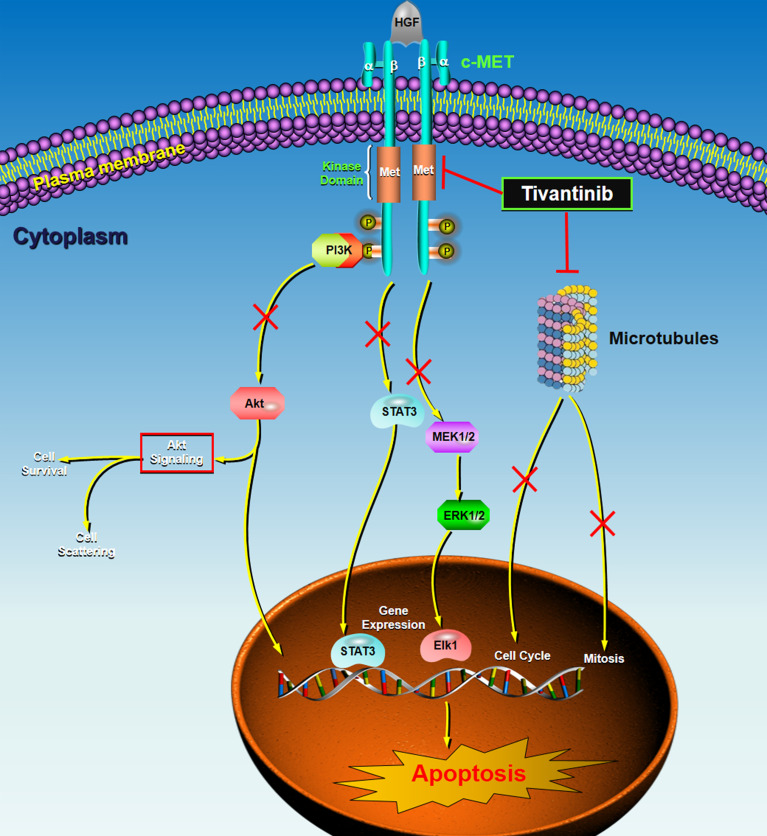Figure 1.
The schematic diagram of the molecular mechanisms of tivantinib in treating HCC. c-MET is the high-affinity receptor for the HGF. c-MET is a single-chain precursor protein composed of extracellular α-subunit and a transmembrane β-subunit. The HGF/c-MET axis commonly dysregulates in cancers, including HCC. Tivantinib, a small molecule c-MET inhibitor, targets the inactive, unphosphorylated form of c-MET, locking it in the inactive configuration and suppressing downstream intracellular signaling pathways, such as PI3K-AKT, STAT3, and MEK-ERK. Also, tivantinib can directly bind microtubules, inducing mitotic catastrophe and cell cycle arrest by disrupting microtubule function or microtubule depolymerization. These actions driving by tivantinib independently or collectively contribute to subsequent apoptosis of the cancer cells. HGF, hepatocyte growth factor; MET, mesenchymal-epithelial transcription factor; PI3K, phosphoinositide 3-kinase; STAT, signal transducer and activator of transcription; MEK, mitogen-activated protein kinase kinase; ERK, extracellular signal-regulated kinase; P, phosphorylation.

